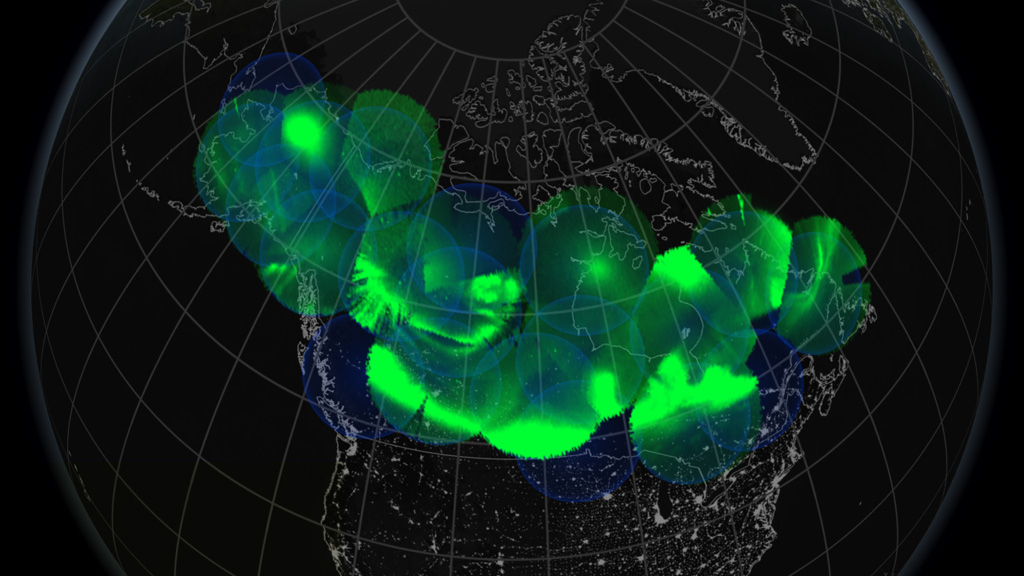THEMIS/ASI Nights - High Resolution
A collection of ground-based All-Sky Imagers (ASI) makes an important component of the THEMIS mission in understanding the interaction of the magnetosphere and aurora. It is sometimes referred to as the sixth THEMIS satellite. Descriptions of the instruments are available on the THEMIS-Canada Home Page. Imagery from each camera is co-registered to the surface of the Earth and assembled into a view of the auroral events.
This movie presents data from the first large auroral substorm since the THEMIS launch. The substorm reached its maximum between 6:00 and 7:00 UT.
Note that the ASI data in this movie are assembled from significantly higher resolution datesets than the earlier version, THEMIS/ASI Nights. The higher resolution enables you to see much finer details in the aurora structure. In addition, one notices trees circling the horizon visible to the cameras located in western Canada.
This movie zooms in on the Earth, revealing the placement of the ASI ground stations and their sky coverage. We observe the stations coming online as the night progresses.

The movie opens with a view over the sunlit Pacific Ocean. The sun is just setting in California.

As we move over northern Canada, already in night, we see the circles of sky coverage for the ASI ground stations (blue circles). The eastern-most stations have come online and we see the image data from these cameras (colored green).

The night progresses and ASI cameras further west come online. The bright green structures from the aurora become evident.

Hours later, almost every ASI camera is online.

Aurora regions brighten as the substorm hits. Components of the auroral structures begin to change more quickly.

Further evolution of the substorm.

Further evolution of the substorm.

Further evolution of the substorm.

Further evolution of the substorm.

As local morning arrives, the ASI stations turn off, starting from the eastern portion of Canada

A few stations are still on in western Canada and Alaska.

All ASI stations are now off.
Credits
Please give credit for this item to:
NASA/Goddard Space Flight Center Scientific Visualization Studio
-
Animators
- Tom Bridgman (Global Science and Technology, Inc.)
-
Greg Shirah
(NASA/GSFC)
-
Producer
- Rani Gran (NASA/GSFC)
-
Scientists
- Vassilis Angelopoulos (University of California at Berkeley)
- David G. Sibeck (NASA/GSFC)
- Harald Frey (University of California at Berkeley)
- Nicola Fox (Johns Hopkins University/APL)
Missions
This page is related to the following missions:Series
This page can be found in the following series:Datasets used
-
[THEMIS: All-Sky Imager (ASI)]
ID: 211This dataset can be found at: http://aurora.phys.ucalgary.ca/themis/
See all pages that use this dataset
Note: While we identify the data sets used on this page, we do not store any further details, nor the data sets themselves on our site.
Release date
This page was originally published on Tuesday, July 7, 2009.
This page was last updated on Sunday, January 5, 2025 at 10:01 PM EST.
